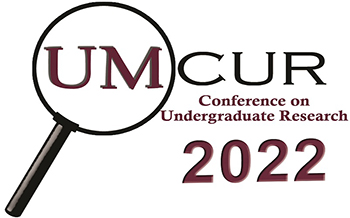Project Type
Presentation
Faculty Mentor’s Full Name
Sarah J. Halvorson
Faculty Mentor’s Department
Geography
Abstract / Artist's Statement
This paper presents an analysis of a current social-environmental conflict regarding a proposed copper mining project in Montana’s Smith River Basin. The research presented seeks to assess the involvement of the Meagher County Stewardship Council in the conflict and their role as a community group comprised of many stakeholders. The proximity of the Black Butte Copper Project to the widely cherished Smith River has raised concerns from a wide variety of environmental and social groups and has brought attention to the plans and actions of Sandfire Resources and their impact as a mining company on the rural community of Meagher County. Viewing the controversy over the proposed copper mine through community involvement helps us to better understand the complexity behind competing stakeholder values and find common ground to develop solutions that benefit the community. Using information gathered from key informant interviews, Council meetings, a survey of literature and review of public documents and media, the research details the significance of a community group such as the Meagher County Stewardship Council in a modern mining endeavor in the Western United States. Stakeholders involved have strong values and reasons for supporting or rejecting the Black Butte Copper Project. In an instance where some have come together to develop the Stewardship Council, there exists an opportunity to promote higher community standards in place of “boom and bust” economies. The results of this research suggest that amid the complex nature of a stakeholder network, a community group that seeks to uphold common values can influence the economic, social, and environmental impacts of a highly controversial potential copper mining project. The case study sheds light on the legacy of the mining industry in rural areas of the Rocky Mountain West, and the complex ways in which people engage with environmental conflict when it is tied to potential economic benefit.
Category
Social Sciences
An Analysis of Community and Stakeholder Participation in an Environmental Conflict: The Controversial Proposed Black Butte Copper Project, Smith River Basin
UC 332
This paper presents an analysis of a current social-environmental conflict regarding a proposed copper mining project in Montana’s Smith River Basin. The research presented seeks to assess the involvement of the Meagher County Stewardship Council in the conflict and their role as a community group comprised of many stakeholders. The proximity of the Black Butte Copper Project to the widely cherished Smith River has raised concerns from a wide variety of environmental and social groups and has brought attention to the plans and actions of Sandfire Resources and their impact as a mining company on the rural community of Meagher County. Viewing the controversy over the proposed copper mine through community involvement helps us to better understand the complexity behind competing stakeholder values and find common ground to develop solutions that benefit the community. Using information gathered from key informant interviews, Council meetings, a survey of literature and review of public documents and media, the research details the significance of a community group such as the Meagher County Stewardship Council in a modern mining endeavor in the Western United States. Stakeholders involved have strong values and reasons for supporting or rejecting the Black Butte Copper Project. In an instance where some have come together to develop the Stewardship Council, there exists an opportunity to promote higher community standards in place of “boom and bust” economies. The results of this research suggest that amid the complex nature of a stakeholder network, a community group that seeks to uphold common values can influence the economic, social, and environmental impacts of a highly controversial potential copper mining project. The case study sheds light on the legacy of the mining industry in rural areas of the Rocky Mountain West, and the complex ways in which people engage with environmental conflict when it is tied to potential economic benefit.
